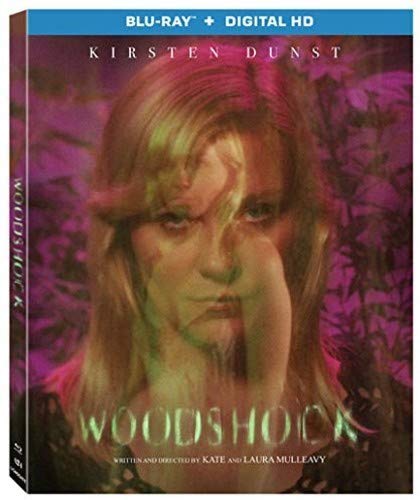
Sisters Kate and Laura Mulleavy may have established themselves well in the fashion world with their brand, Rodarte. But when it comes to trying to get noticed in the world of film, they need some work. Okay, a lot of work.
Although the duo helped create some gorgeous outfits for Darren Aronofsky’s Black Swan, their directorial debut, Woodshock, is the result of someone (in this case, two people) with an eye for visuals and nothing else. It looks pretty in both the wardrobe and cinematography departments, but it’s so self-indulgent that it forgets to make the viewer care for the story at hand, and it becomes a chore to endure.
In the film’s opening moments, Theresa (Kirsten Dunst) aids her mother in assisted suicide by spiking a joint. Following her mother’s death, Theresa experiences a state of depression, and after taking some mind-altering drug, she begins to question what is real and what is not. She wanders the redwoods of Northern California, recouping from her loss and trying to make sense of the world. And from here on out, the movie loses itself.
The viewer is stuck with Theresa as she tries to find herself and overcome what she’s experiencing. Dunst has been terrific in recent roles such as Sofia Coppola’s remake of The Beguiled and the second season of FX’s Fargo. With Woodshock, she’s given minimal work. All she does is look confused and sad. She also smokes weed and wanders around in either a nightgown or a bra and jeans. That’s really about it.
Theresa has a live-in boyfriend named Nick (Joe Cole). The two now occupy her mother’s house. Nick wants her to move on and leave the house, Theresa doesn’t. Nick also works as a logger, and Theresa hates that. There’s even a line in which she asks if he ever feels bad for cutting down trees, to which he replies, “Sometimes.”
The movie reeks of pretentious moments such as that conversation. There’s even a scene in which Theresa hugs a tree. To add onto it, Theresa also works at a medical marijuana dispensary, run by her good friend, Keith (Pilou Asbæk). Woodshock wants to be taken seriously, but it ventures itself into self-parody.
By the way, Keith administered the liquid Theresa used in assisting her mother’s suicide. He also has a thing for her, and, to help her overcome her grief, invites her out to parties and bars all the time.
There’s something there, but Woodshock doesn’t even bother digging deeper. Every single detail we get about each character is kept at surface level. Beyond that, the movie doesn’t seem to care, and, therefore, the viewer doesn’t care.
The runtime is just at 100 minutes, almost too long for something that feels like a freshman film school project. Nightmarish flashes, double exposures, lens flares, and other sorts of trickery all bombard the screen. One moment of double exposure has Theresa standing still in one image, while the other spins 360 degrees.
It’s all supposed to feel like some long drug trip, as Theresa makes her way through her life after experiencing tragedy. Yet none of it makes any type of impact.
Whatever moments that are supposed to come across as shocking or powerful result in being flat. The viewer is constantly jerked around between the real world and some crazed vision that, at times, it’s difficult to follow what exactly is happening.
The Mulleavys use Woodshock mainly as a showcase for their artistic side in a different department. They obviously have the eye for something that can be a visual head trip. David Lynch appears to be an obvious influence on the two, as does Terrence Malick. Maybe this experiment was just that so see what kind of imagery they can create, and their next feature – if they decide to continue in the filmmaking world – might blow us all away. But there has to be something beneath all of that in order to engage people.
The Blu-ray for Woodshock comes with just one feature called “Making Woodshock: A Mental Landscape.” It features an interview with the sisters as they talk about how the film came about. It’s a 13-minute feature that, for some reason, feels the need to add a double exposure effect when one of the sisters is talking. Sometimes, the double exposure will be on the same answer and from the same angle. Again, like the double exposures in the actual movie, there’s no purpose to having them here.
Woodshock feels like it has something to say about grief and depression, and the state of mind one experiences after suffering from a tragic loss. But through all the smoke and mirrors, it really has nothing to say about either of those topics or anything else at all.